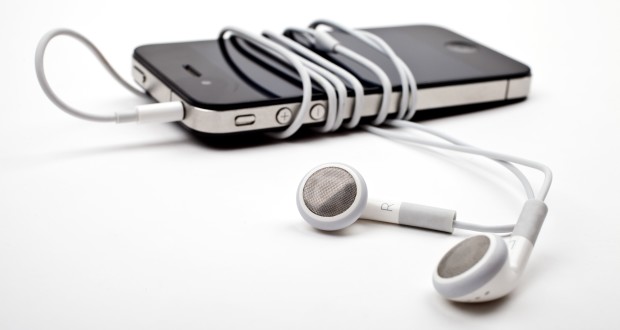You don’t have to look very far to find someone with a pair of headphones firmly affixed to their ears. In fact, people often play their favorite tunes at levels loud enough for others to hear. Not surprisingly, such behavior is not good for the ears’ long term health. This doesn’t mean that you should give up listening to music altogether; rather, you can avoid damaging your hearing simply by toning down the volume of your headphones.
The Downside of New Technology
According to the American Osteopathic Association (AOA), hearing loss among US teenagers has grown substantially in the previous few decades. In fact, the AOA notes that prevalence of hearing loss in this demographic has risen 30% since the 1980s and 1990s, and now affects approximately 1 in 5 American teens.
Many experts contend that a key factor behind this worrisome trend is the popularity of smartphones and mp3 players. Each day, millions of people use these popular devices to listen to song after song for extended periods of time. While this technology gives consumers ready access to a virtual encyclopedia of music, it also provides users with the option to play songs at dangerously high volumes.
The National Institutes of Health (NIH) notes that headphones can reach maximum volume levels of 105 decibels (dBs). This figure far exceeds the 85 dB threshold for hearing loss. When subjected to loud noises and sound, hearing loss can quickly occur; according to the World Health Organization, headphone users who listen to 30 minutes of music at 95 dB experience permanent hearing damage.Contributing to this problem is shape of headphones themselves. In the past, headphones featured speaker pads that rested against the outside of the ear. Today, this design has largely been replaced with the earbud model; the “buds” of these headphones fit snugly inside the outer sections of the ears, offering better quality sound than their predecessors. Unfortunately, their small size also means that they are positioned closer to the eardrum, increasing the risk of hearing loss.
Hard to Spot
It appears as if identifying damaged hearing may not be as easy as once thought. Recent research has found that the human ear could be prone to “hidden hearing loss.” In short, this form of hearing impairment occurs when a person’s ability to detect certain sounds over background noise diminishes. Modern hearing tests don’t account for the presence of this external factor; consequently, they may yield misleading results.
It is believed that “hidden hearing loss” affects an inner ear organ called the cochlea. Resembling the shape of a snail shell, the cochlea plays an essential role in the hearing process, transforming sound vibrations into electrical impulses. It then the sends this data to the brain for interpretation. Studies have indicated that a person suffers this “hidden” hearing damage when cochlear nerve cells are unable to communicate with hair cells, eroding the ear’s hearing capabilities.
A Simple Rule
Fortunately, there is a way that music lovers can lower their risk of headphone-induced hearing damage. This guideline is known as the “60/60 rule,” and it is as straightforward as its name would suggest. Simply put, smartphones/mp3 owners should strictly limit their headphone use to only 60 minutes per day. The other half of the 60/60 rule deals with volume levels; when using headphones, do not raise the volume of your music-playing device beyond the 60 percent mark. By adhering to this easy-to-follow rule, you can still listen to plenty of songs while giving your ears a much needed reprieve.
 Natural Knowledge 24/7 Educate yourself with nutrition, health and fitness knowledge.
Natural Knowledge 24/7 Educate yourself with nutrition, health and fitness knowledge.






